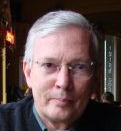
Malongo is situated about a five-minute walk from place Saint-Michel near the Seine River. It is a coffee house that has a large sales room where a coffee beans are roasted and sold; a counter where coffee is brewed and sold; and two rooms where customers sit to enjoy their beverages.

I entered to taste and purchase their coffee of the month and learned that it was Cajamarca from Peru.

Before purchasing the roasted beans, I went to the coffee counter (located in another room) and ordered an espresso made from the same bean.

I also ordered a caramel tart to accompany the espresso. (The barista graciously provided an extra fork so that I could share the tart with my partner.)

After tasting the tart and espresso, I returned to the sales room to purchase a 250g bag of the roasted bean.
There, I learned that a selection of green coffee beans could be roasted on the spot in a retro-futuristic-looking coffee roaster (minimum purchase 500g).

I admired the coffee roaster, but decided to proceed with the purchase of the Peruvian beans, since they had already been roasted, vacuum packed, and packaged in a handsome box.

Back home, I used my 9Barista stove-top espresso machine to make a 40g shot of espresso. The machine produced an espresso with a reddish-golden froth and an intense flavor similar to the one that I had tasted at the coffee shop.
After making several cups over a period of several days, I finally concluded that I could detect the subtle note of grapefruit that was indicated in the tasting notes on the box.
Malongo
50, Rue Saint-André des Arts
75006 Paris
















